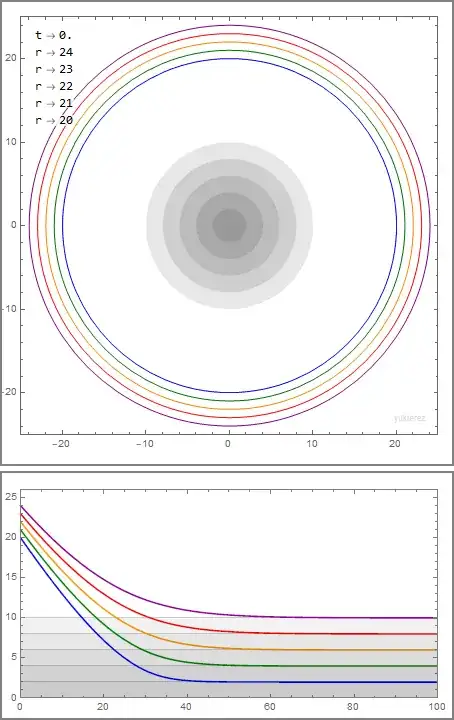Once you start studying black holes, one of the first things you'll probably hear is that from an outsider's perspective objects falling into the black hole take an infinite time to do so due to time dilation. The object will asymptotically approach, but never reach the event horizon.
As far as I understand the typical description of this, people are referring to the event horizon of the black hole as it was before the approach of the new object. However, my understanding is also that you can calculate a Schwarzschild radius for the total mass $M+m$ (where $M$ is the mass of the black hole and $m$ is the mass of the falling object) which would constitute the radius for the event horizon formed by the combined mass.
This new radius would be only very slightly larger, but positively so. Initially, this new event horizon would be inside the total mass, just like the old one. However, if the assumption here is that the object is approaching the old event horizon, then eventually in finite time, the object would reach the new radius. At that point, the total mass would be inside its Schwarzschild radius, so it would effectively be a black hole of increased mass compared to the original one, while the new event horizon would be exposed outwards.
As such, this would imply that from an outside perspective the falling object would eventually vanish entirely in finite time and the black hole would appear larger.
Some potential flaws in my reasoning that I can see, but I'm not sure about are the following:
- The total mass of the black hole + the object is not perfectly spherical or symmetrical and therefore the Schwarzschild radius is not necessarily an appropriate way to describe or approximate the situation.
- The way the mass is distributed inside an event horizon may not matter for the gravitational effects outside it, but it might matter for the effects inside it. Thus the region between the two event horizons does not necessarily behave like the inside of a black hole and could still be visible to outsiders.
- Even if we account for the new event horizon, the object actually approaches that and not the old horizon, therefore it still only asymptotically approaches it.
If I'm right about any of these doubts I'd appreciate if someone confirmed that, but if there's something else going on that'd be even more interesting.
It's also worth noting that is the strong version of my syllogism where only one object is enough to allow itself to cross the horizon. Even if we conclude that this is not the case, there is a weaker version where we study the effect of multiple objects approaching the black hole. If one assumes a constant inflow of matter (unrealistic, I know, but bear with the hypothetical for a moment) then eventually (given enough time) the area near the event horizon would get dense enough and the expanded horizon wide enough that some, if not all, the approaching matter would end up inside it. If this is correct, then it might also be generalised for cases where the inflow isn't constant, but it's large enough for a long enough time for the effect to kick in.
